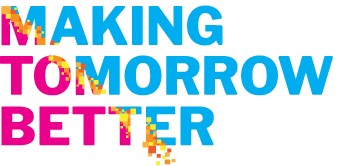Understanding Search Engine Optimization (SEO)
Anyone can do this simple test: type your organization’s name in any search engine’s search field and take a close look at the search engine results page (SERP). Much of the content displayed about your organization tends to come from your own web presence. Search engines may use your actual content as well as content from meta tags to generate the search results listing. In addition to search results from sites you control, there are likely some links to other websites with information about you or that are optimized for keywords similar to your name.
Perhaps most important is whether the information − the blue title link, the text – that appears is accurate, the most important to encourage a web user to click on the site.
There is a lot you can do to improve the information that appears in search results for your organization:
- Maintain a search-optimized website
- Frequently update your website with keyword-rich content
- Implement structured data markup to generate rich snippets that search engines can use to provide answers to web users using your content
- Follow web design best practices for accessibility
- Claim or create information for Google’s Knowledge Panel about your organization through Google’s Business Profile (formerly MyBusiness)
- Optimize your social media pages
- Claim linked, open directory profiles where possible, or create them and ensure they are current
How to optimize your listing on Search Engine Results Pages (SERPs)
When you look at your listings on a search engine results page, do you like what you see? Is it immediately clear who you are and what you do? Is the information displayed encouraging a web user to click through to your web page or to look for other results from other organizations? If your operations are local or centred on a particular region, is this clear in the search result?
Ideally every page on your website would be fully optimize. That said, this is not always practical: if you have 40 pages that’s much easier than if you have 4,000 or 40,000 pages. If you have a content-rich site, triage the priority needs for improvement and invest time where you’ll see the biggest return: for instance, home page, secondary landing pages, or key sections. New content should simply be conceived with these simple SEO concepts in mind, rather than be retrofitted later.
There are a number of ways you can influence the salience, the importance a user ascribes to your search result. This requires an understanding of how different content from your site or meta tags is used by search engines.
For instance, your title tag becomes the headline of the blue search result link. The first HTML-coded sentence of the webpage or the meta description tag become the short description displayed underneath the blue link. Your web address or url using natural language, instead of non-sensical code also helps the user feel more secure in following the link to your website.
URL and site structure
The most important aspects of successful traditional SEO are the URLs of your actual, natural language, keyword-rich domain and sub-domain pages, therefore:
- Use descriptive URLs
- Customize page/post URLs. They should be short but contain the essential keywords to capture the content on each page
- It is more effective to be straightforward and use plain English than clever
- Spell out full words; don’t use acronyms that are not universally known
- Do not use numbers, like dates, titles for blog post URLs
- Each event, product, or service requires its own page
- Optimize the content to include relevant keywords, as well as the relevant structured data
Traditional meta tags
Meta tags provide search engines with text that describes the content or purpose of the content on your site. These are not visible to users when browsing your website, but can be defined within your website’s source code, or using an SEO optimization plug-in such as Yoast (for WordPress sites), or completing the fields for SEO information in Wix and other Do-It-Yourself website content management systems. Here are the most important meta tags, in order of importance, to consistently use on your site, and how these affect SEO and your SERP listing.
Meta tag |
What it does |
|
Title tag
|
Appears on the web browser tab and as page name in search results, as well as within the link preview when the URL is shared on social media sites like Facebook. It is the most important meta tag because it influences search rankings. |
|
Description tag |
Provides search engines with a summary of the content on the page to display within search results (can be up to about 155 characters).
· Write a unique description for each page; do not use the same description throughout your website · This snippet may be displayed on SERPs, and a well-written description may improve click-through rates, which is a factor in search rankings. · Keywords within this description do not affect search rankings directly. Focus on accuracy and relevance, not merely keyword optimization for this text. Note: if the meta description you wrote does not appear to match the content on the page or seems overly self-promotional, Google may select the first HTML sentence on the web page, o Google may generate its own description for you. |
|
Image ALT text |
Describes what an image is about. Important to define for all non-decorative images on your site (i.e. any image that conveys meaning). Alt text should be brief, descriptive, keyword-rich and factual, not promotional.
· Helps search engines index images properly · Important for accessibility for visually impaired people using screen readers to browse the web · Will appear on your website in place of the image if it fails to load |
|
Heading tags |
Indicates which text is the main headline, and which are various levels of subheadings. Headlines and subheads describe what the following content is about, so you should be sure to use relevant keywords within this text.
The h1 tag is of particular importance to ensure keyword-rich, relevant main headings. |
|
Canonical tag |
When a website has several URLs with the same content, for instance your site may have a page with or without the www. prefix, so search engines can get confused about what the authoritative page is. Google determines which page it considers authoritative as best it can. To help search engines recognize the authoritative source reliably, you can identify the master page using the canonical tag, thus identifying it without ambiguity. |
|
Robot.txt file |
Tells search engines what to do with your page:
· index/noindex – This tells search engines whether to show your page in search results or not. · follow/nofollow – This tells search engines what to do with links on your pages: whether they should trust and “follow” your links to the next page or not. Social media sites and forums often use nofollow links to limit spam and unethical SEO tactics. |
|
Keyword tags |
When search engines cannot read your page, for example because it uses primarily rich media content instead of HTML text, they may evaluate keyword tags, in addition to the description tag, to glean what the page is about. Keywords are not as important for SEO as they used to be and are no longer used in ranking algorithms. |
Create one web page for each event or product
When arts organizations or festivals create web pages that list multiple shows simply using HTML without effective traditional and advanced SEO, search engines and other data crawlers and scrapers are less likely to effectively index your page.
Further, with the popularity of mobile devices and the preference of mobile web users toward scrolling content, Single Page Applications (SAP) have become more common. A Single Page Application is a website that loads all of the resources required on the first page load, and then dynamically refreshes content as the web user interacts with the site without ever making full page request. These Single Page Applications are more difficult for search engines to index because they can contain many different pieces of information, so they are typically not used when search visibility is prioritized.
There are several other challenges with loading an entire website as a single page, from tracking web history to analytics to internally linking and backlinking. Workarounds are both labour-intensive (such as creating an actual HTML version of the site), unreliable (if the content between the mirror HTML site and SAP appears too different for a search engine it might be penalized instead of listed), and fraught with maintenance challenges (such as maintaining current content on multiple versions of a website).
How one web page for each event benefits you
Web searches lead to the most relevant pages on the web based on the keywords searched. When all the relevant content about a show is put on its own web page, website owners can provide a richer, more compelling and specific experience to the human user. Headlines and body text are specific to the artist or show, boosting credibility with the search engine. We can also code each single event page in order to optimize it for search. For instance, the artist’s name or show title can be used in the web address, title tag and description tag.
Adding your town, event date, and start time also helps search engines surface your specific events (i.e., What’s on in Calgary tonight; versus Matt Anderson tour). Provide this factual information as plainly as possible, separated out on different lines (not within sentences or a paragraph). Use consistent date and time formats across all your event pages.
Automated scraping of web content is also facilitated when each event has its own web page with factual information in a consistent format as described above.
View or download the PDF of Building an effective web presence in 2022 – Understanding Search Engine Optimization
Written by Briana Doyle, Troubadours & Vagabonds Productions, and Inga Petri, Strategic Moves
December 2021
Links to Topics
Building an Effective Web Presence in 2022: First Impressions and Your Digital Footprint
Essential New Web Building Blocks
Understanding Search Engine Optimization (SEO)
Writing for people and coding for search engines
Content Drives Linking Strategy
Good design drives user experience and usability
Take note: Every search engine results page is unique.
Even if two people type the exact same keywords at the exact same moment into the same search engine, the results will be different based on the user’s current location, language, search history, and more. Rankings may also change from day to day as search engines tweak their algorithms and new webpages are indexed.
Technical SEO
Several technical attributes also affect your search engine rankings:
- Fast load time: avoid heavy images and auto-play videos unless you are certain your users all have super-fast internet
- SSL (secure socket layer) encryption
- A sitemap.xml and robot.txt file (used to ensure that search engines index your site correctly)
In addition to simply Googling your site and seeing how your content displays, you can also use SEO tools to evaluate your presence. There are many available, often free of charge. Three we use quite often:
Structured data plug-ins and other ways to enhance discoverability of your content online are discussed in other installments of this Digital Playbook, Mastering Discoverability through the use of Structured Data and Linked, Open Directories.
The problem with a single calendar listing page
For a search engine or web crawler, a simple calendar listings approach makes it difficult to index the page effectively for each event presented on it. Simply put, most of the information on the page is not relevant to one artist, or one show. Similarly, the title tag and the description tag – some of the most important pieces of meta data a search engine takes into account when ranking your web page – are likely generic and broad, rather than keyword-rich and specific.
When building or updating a website there are a few things to know:
- Google doesn’t rank your website as whole. Instead, Google indexes each page on your site. If everything is on one page, it’s much harder for Google to understand what that page is about.
- The use of frequently searched keywords within your text can enhance the ranking of your event page in search results or in Google Event Finder.
- Search engines require one authoritative (canonical) master page with all the event information in order to properly index your information. This will impact whether and how Google displays your event in an Answer Box or in Google Event Finder.
- When you use tags, from descriptive and structured data meta tags to style tags that are used to identify levels of headings and body text, Google understands your content better. In short, words in a headline are more important than words in body text. This requires using your website’s style sheet, instead of manually adjusting fonts; this mirrors the styles in Word processing software.




